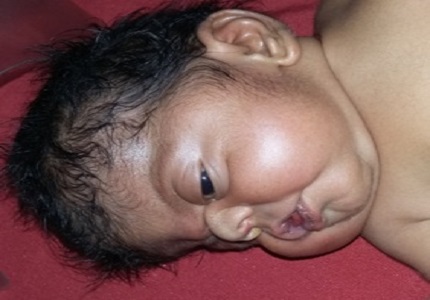Apert’s Syndrome: rare variant of a common anomaly (Craniosynostosis)
Abstract
Apert’s syndrome (Acrocephalosyndactyly) is a rare congenital condition characterized by primary craniosynostosis, mid face malformations and symmetrical syndactyly of the hand and feet. Untreated craniosynostosis leads to inhibition of brain growth and an increase in intracranial and intraorbital pressure. We present here a case of neonate with Apert’s syndrome. The typical features as described makes it easy to diagnose Apert’s syndrome. Radiology plays an important role in the evaluation and management of these patients. Despite of tremendous advances which have been made in the prevention and treatment of developmental anomalies, they still remain a significant cause of morbidity worldwide. Because of the multiple alterations in patients with Apert’s syndrome, a multidisciplinary approach is essential for a successful planning and treatment.
Downloads
References
2. Stephen LK, Michael VJ. Craniosynostosis.In:Nelson textbook of Pediatrics-first south Asia edition 2015.Elsevier Inc; p2817-2819. [PubMed]
3. Jones KL, Jones MC,Campo M .Smith's Recognizable Patterns of Human Malformation. 2013:7:474-75. [PubMed]
4. Lajeunie E, Cameron R, El Ghouzzi V, de Parseval N, Journeau P, Gonzales M, Delezoide AL, Bonaventure J, Le Merrer M, Renier D. Clinical variability in patients with Apert's syndrome. J Neurosurg. 1999 Mar;90(3):443-7. [PubMed]
5. Apert E. De lacricephalosyndactylie. Bull Soc Med Hop Paris 1906; 23: 1310-1330.
6. Aviv RI, Rodger E, Hall CM. Craniosynostosis. Clin Radiol. 2002 Feb;57(2):93-102. [PubMed]
7. Cohen MM Jr, Kreiborg S. Skeletal abnormalities in the Apert syndrome. Am J Med Genet. 1993 Oct 1;47(5):624-32. [PubMed]

Copyright (c) 2016 Author (s). Published by Siddharth Health Research and Social Welfare Society

This work is licensed under a Creative Commons Attribution 4.0 International License.


 OAI - Open Archives Initiative
OAI - Open Archives Initiative


